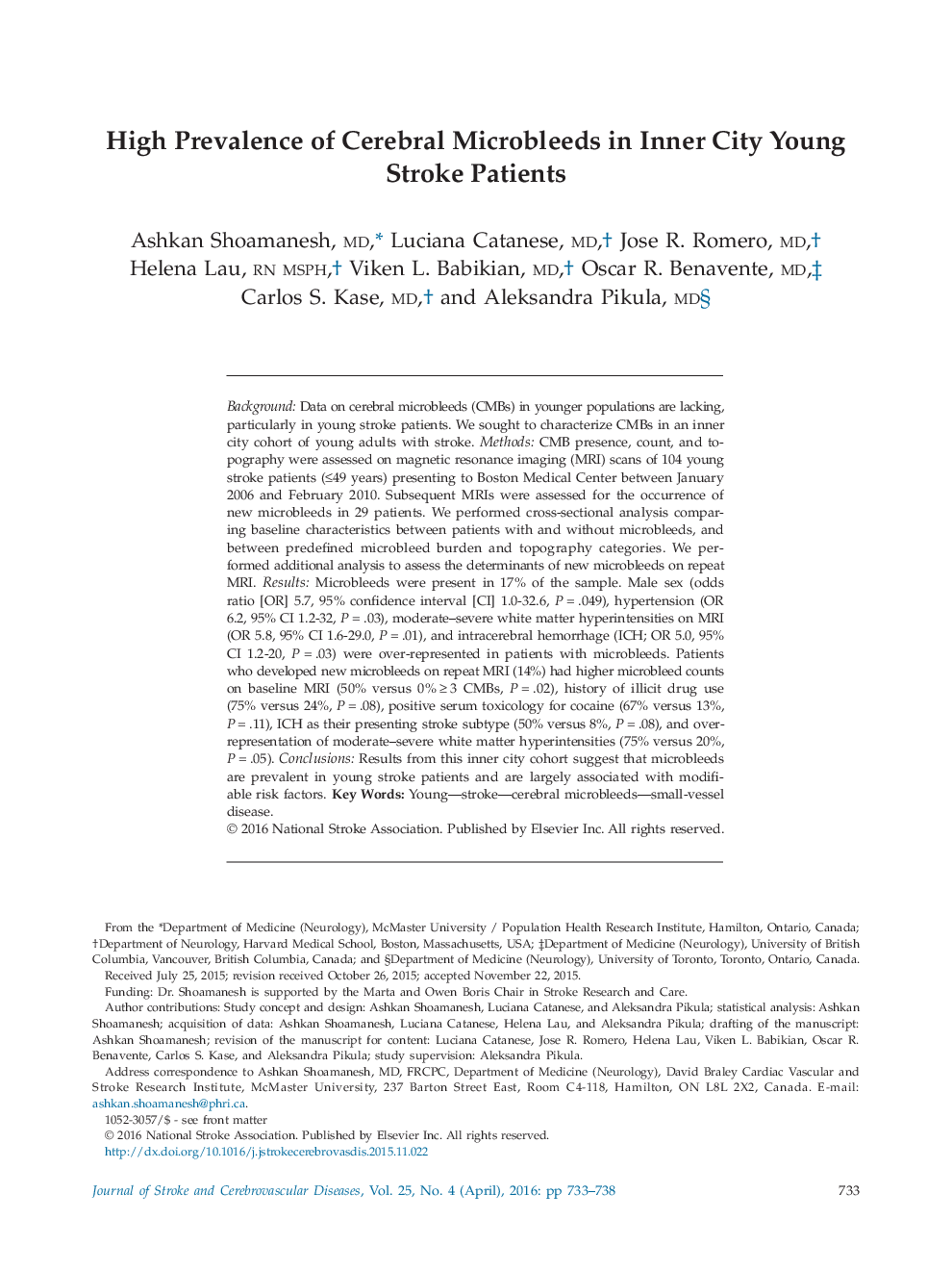| Article ID | Journal | Published Year | Pages | File Type |
|---|---|---|---|---|
| 2701601 | Journal of Stroke and Cerebrovascular Diseases | 2016 | 6 Pages |
BackgroundData on cerebral microbleeds (CMBs) in younger populations are lacking, particularly in young stroke patients. We sought to characterize CMBs in an inner city cohort of young adults with stroke.MethodsCMB presence, count, and topography were assessed on magnetic resonance imaging (MRI) scans of 104 young stroke patients (≤49 years) presenting to Boston Medical Center between January 2006 and February 2010. Subsequent MRIs were assessed for the occurrence of new microbleeds in 29 patients. We performed cross-sectional analysis comparing baseline characteristics between patients with and without microbleeds, and between predefined microbleed burden and topography categories. We performed additional analysis to assess the determinants of new microbleeds on repeat MRI.ResultsMicrobleeds were present in 17% of the sample. Male sex (odds ratio [OR] 5.7, 95% confidence interval [CI] 1.0-32.6, P = .049), hypertension (OR 6.2, 95% CI 1.2-32, P = .03), moderate–severe white matter hyperintensities on MRI (OR 5.8, 95% CI 1.6-29.0, P = .01), and intracerebral hemorrhage (ICH; OR 5.0, 95% CI 1.2-20, P = .03) were over-represented in patients with microbleeds. Patients who developed new microbleeds on repeat MRI (14%) had higher microbleed counts on baseline MRI (50% versus 0% ≥ 3 CMBs, P = .02), history of illicit drug use (75% versus 24%, P = .08), positive serum toxicology for cocaine (67% versus 13%, P = .11), ICH as their presenting stroke subtype (50% versus 8%, P = .08), and over-representation of moderate–severe white matter hyperintensities (75% versus 20%, P = .05).ConclusionsResults from this inner city cohort suggest that microbleeds are prevalent in young stroke patients and are largely associated with modifiable risk factors.
